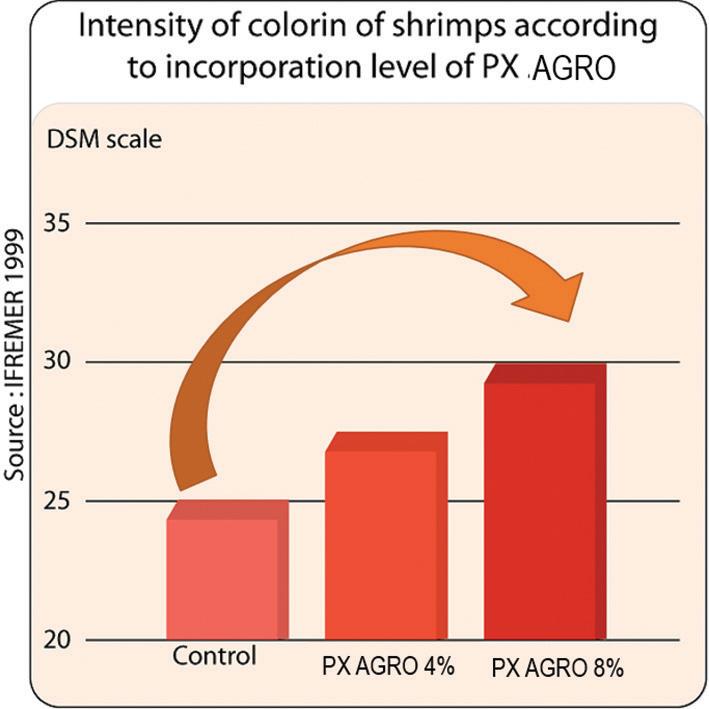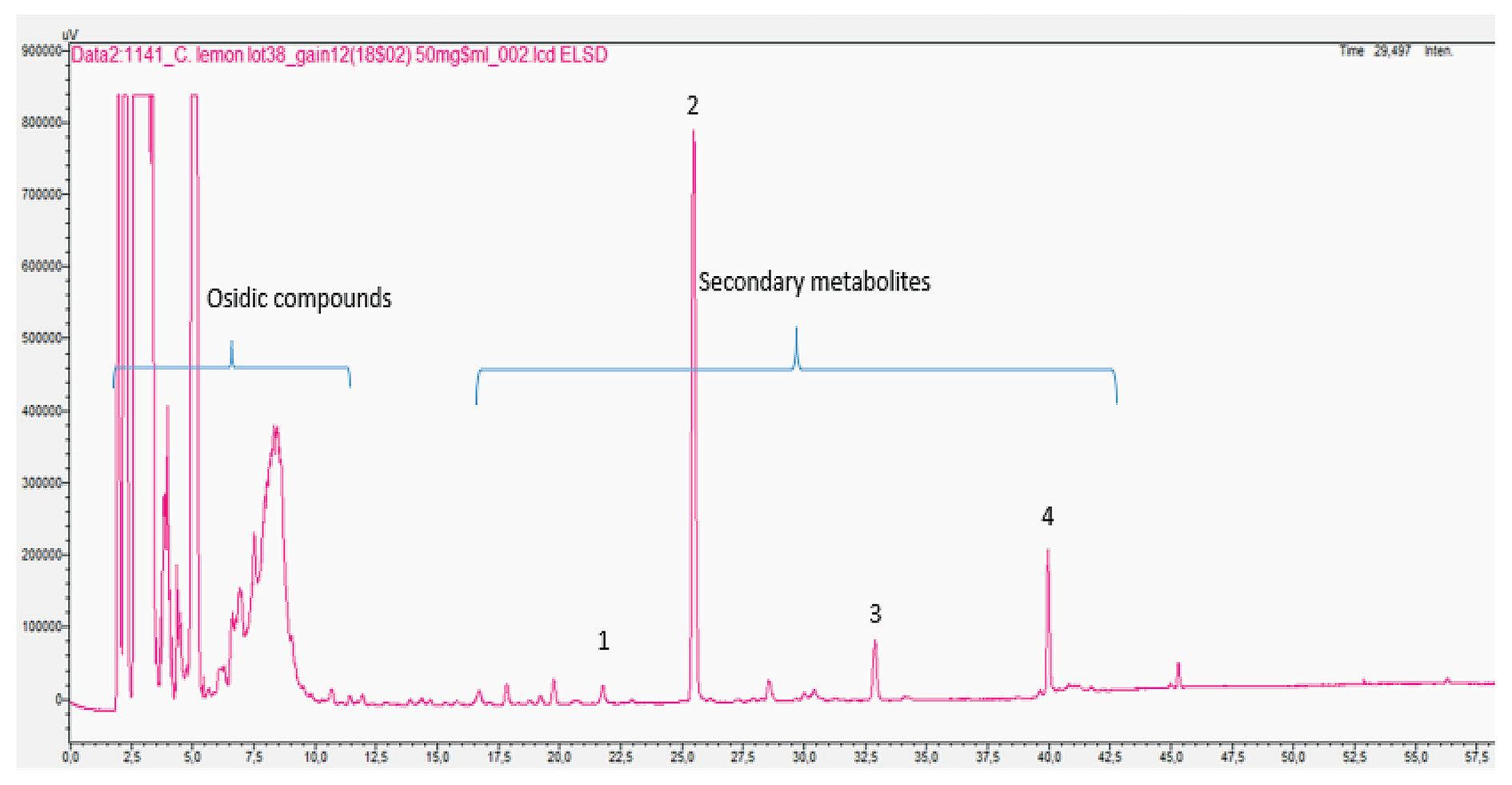
3 minute read
Pigmentation and growth performance on seabream and shrimp
Didier Coulmier, Désialis and Nicolas Robert, Aquaculture Consultant Nutrition & Health
In the current competitive market of farmed seabream, fish quality differentiation is vital for producers. Among good conformation, homogenous weight, pigmentation of seabream is one of these quality criteria that makes a difference and is easily recognizable by the advised final customer. The name itself, “gilthead seabream” is a reminder of the importance of the face coloration of this animal in the wild. The hue of wild coloration is mainly yellow, gold yellow, with possible pink irisations.
Moreover, in the 30 last years, aquaculture has grown a lot. As a result, the demand and price of raw materials, especially fish protein dedicated to the feed industry has increased dramatically. This trend leads producers to find alternative protein sources, often vegetable proteins.
For years now, natural raw material has been used with success for pigmentation of fish and crustaceans: the extract of alfalfa named “PX Agro”, an exclusive product of Désialis obtained from a unique extraction process. From the alfalfa forage, an exclusively physical process, collects a juice by press, that is then coagulated, centrifuged and dried to obtain the alfalfa extract, also named alfalfa protein concentrate.
PX Agro contains a high level of pigments called xanthophylls, mainly lutein and zeaxanthin, in an amount much higher than corn gluten meal for instance (3 to 4 times more). PX Agro is also rich in proteins, with an interesting amino acid profile for feed formulators. Its phosphorus level is adequate to fish requirements and is in a very available form. This product is available in crumbles or pellets for feed manufacturers and is incorporated as raw material in feed recipes for fish such as seabream but also with success in shrimp feeds.
We briefly relate the results of accurately run pilot tests in well-known research centers as IMBC for seabream.
Seabream coloration
Tests show a very clear effect on seabream pigmentation compared to the control, after 7 weeks (temperature 19-22°C). Operculum shows a bright gold yellow area, as well as on the front area, a clear 1 to 2 cm yellow line is also visible on the low part of the abdomen.
Seabream conformation
We find in this seabream test a hepatosomatic index reduction (liver size compared to body weight) of

Source: IMBC.


Source: Ifremer.
around 6 to 8%, which would once again let us think of improved metabolism. This effect has also been observed on trout.
Moreover, PX Agro incorporation in feed allows an FCR reduction of more than 6%, with improved growth of 6.5%, without change on the feed intake (self-feeder). PX Agro revealed much more efficiency than corn gluten meal for instance, on pigmentation as well as on growth performances.
Other species
These growth performance improvements were also observed in other species on which PX Agro was used. In rainbow juvenile trout production, weight gain per unit energy intake was increased by 4% and in pacific shrimp, an animal that grows by molting process, weight gain was improved by 25-30%. This phenomenon can be explained by energy supply, and probably improved metabolism, osmotic balance, as well as supply of a rare essential component.
In shrimp, PX Agro pigments are metabolized in astaxanthin, which leads to strong red coloration of shrimp shells after cooking. This metabolism is specific to crustaceans and does not occur in our farmed marine fishes.
In a nutshell
As a vegetable natural protein-rich in pigments, PX Agro, brings a “quality plus” for seabream pigmentation as for other aqua production, and improves growth performance and feed efficiency at the same time, which is welcome for producers.
PX Agro has the strong advantage to be a natural, non-GMO complex raw material, combining pigments, proteins and other interesting nutrients such as vitamins, minerals and amino acids.
References
Robert N, Coulmier D, Chatzifotis S, Divanach P, Cuzon G. 2004. 11th International Symposium on Nutrition and Feeding of Fish, Pukhet Island, Thailand.
More information: Didier Coulmier
R&D Director Désialis, France E: didier.coulmier@desialis.com










